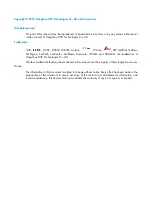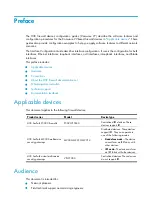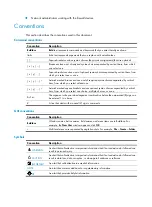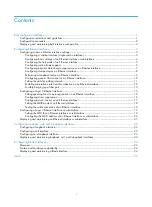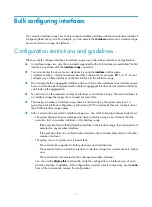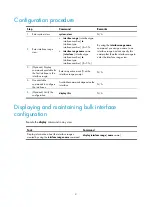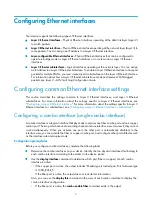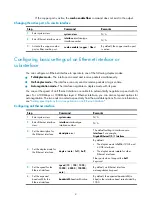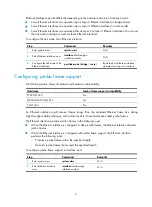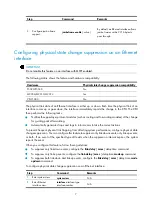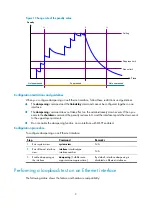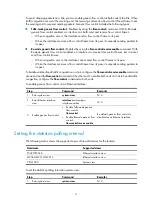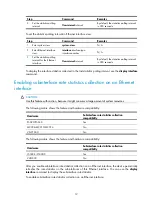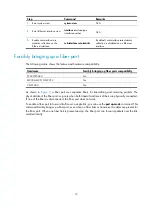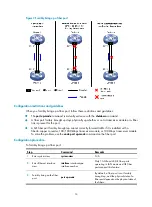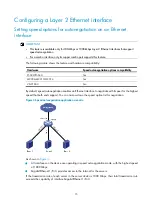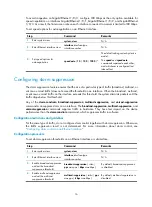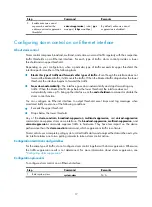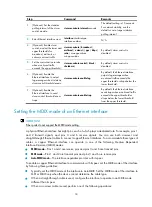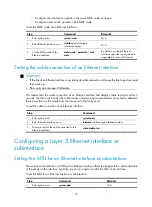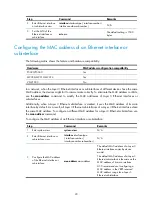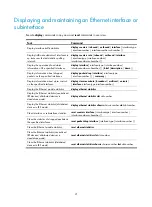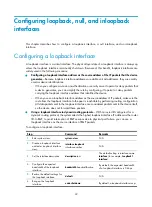
7
Step Command
Remarks
3.
Configure jumbo frame
support.
jumboframe enable
[
value
]
By default, an Ethernet interface allows
jumbo frames within 9216 bytes to
pass through.
Configuring physical state change suppression on an Ethernet
interface
IMPORTANT:
Do not enable this feature on an interface with MSTP enabled.
The following matrix shows the feature and hardware compatibility:
Hardware Physical state change suppression compatibility
F5020/F5040 No
M9006/M9010/M9014 Yes
VFW1000 No
The physical link state of an Ethernet interface is either up or down. Each time the physical link of an
interface comes up or goes down, the interface immediately reports the change to the CPU. The CPU
then performs the following tasks:
•
Notifies the upper-layer protocol modules (such as routing and forwarding modules) of the change
for guiding packet forwarding.
•
Automatically generates traps and logs to inform users to take the correct actions.
To prevent frequent physical link flapping from affecting system performance, configure physical state
change suppression. You can configure this feature to suppress only link-down events, only link-up events,
or both. If an event of the specified type still exists when the suppression interval expires, the system
reports the event.
When you configure this feature, follow these guidelines:
•
To suppress only link-down events, configure the
link-delay
[
msec
]
delay-time
command.
•
To suppress only link-up events, configure the
link-delay
[
msec
]
delay-time
mode up
command.
•
To suppress both link-down and link-up events, configure the
link-delay
[
msec
]
delay-time
mode
updown
command.
To configure physical state change suppression on an Ethernet interface:
Step Command
Remarks
1.
Enter system view.
system-view
N/A
2.
Enter Ethernet
interface view.
interface
interface-type
interface-number
N/A


